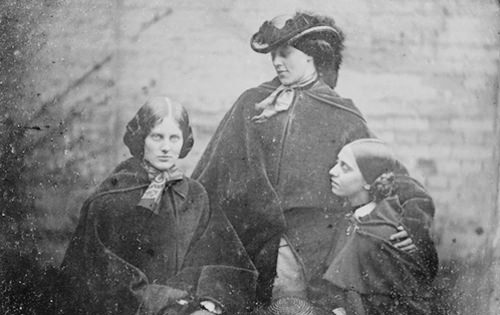
Acting as a landmark in the history of English literature,
these women had given a new face and a perspective to women in the 19th
century. And their masterpieces were not only milestones in the timeline of
literature but they were also pioneers of a revolutionary concept for females across the
world; feminism. Their portrayal of female characters in their novels was way
too deviant from the social norms and expectations of the ‘ideal female’. Their
projections of female characters were contemporary and new-fangled. Through just
a plain quill, they did change the world and for the better.
The Brontë sisters were the part of a nineteenth-century
literary family living in the West Riding of Yorkshire, England. The sisters,
Charlotte, Emily and Anne, are, now, well known as poets and novelists. They were
amongst several other radical female writers who originally published their
poems and novels under male pennames: Currer, Ellis, and Acton Bell,
respectively. Their stories immediately attracted attention for their passion, progressiveness
and ingenuity. Charlotte's Jane Eyre was the first to triumph, while Emily's
Wuthering Heights, Anne's The Tenant of Wildfell Hall and other works were
later to be recognized as masterworks of literature. Living in a very
conservative society, the Brontë family had to face several hardships, starting
from poverty, illnesses and all sorts of deprivation.
Charlotte:
She was the eldest amongst the three Brontë sisters and third
born amongst all the siblings. Due to the untimely death of her mother and
elder siblings, she was a mother figure for her younger siblings. She first
published her works under the pen name Currer Bell. Brontë's first manuscript,
The Professor, did not acquire a publisher, although she did not lose hope
because of an encouraging response from Smith, Elder & Co. of Cornhill, who
expressed an interest in any lengthier works Currer Bell might wish to send to
them. Brontë responded by finishing and sending a second manuscript. A few
weeks later Jane Eyre was published. It tells the story of a plain governess,
Jane, who, after difficulties and abuse in her early life, falls in love with
her enigmatic employer, Mr Rochester. They marry, but only after Rochester's
insane first wife, of whom Jane initially has no knowledge, dies in a dramatic
house fire. The book follows an eventful and life of Jane, who is a simple but
an idealistic woman, as she grows into a strong and independent women. The
book's style was original, combining naturalism with gothic melodrama, and
broke social norms because it evoked first-person female perspective. Brontë
believed art was most substantial when based on personal experience; in Jane
Eyre she transformed the experience into a novel with universal appeal.
Emily:
She was younger to Charlotte and elder to Anne. She was a
homely and rather quiet individual. She was a very imaginative, peaceful and
shy. She was greatly inspired by several fictional and fantastical books and spent
most of her childhood time writing fictional stories. Yet, Emily Brontë remains
a mysterious figure and a challenge to biographers because information about
her is scant due to her reclusive nature.
She published her most famous book Wuthering Heights, whose ferocity and
desire made the Victorian public and many early reviewers to believe that it
had been written by a man. The vivid, wild and outrageous portrayal of the led
characters baffled the conservative crowds. The fresh story grabbed a lot of attention
from the critics, yet it got a mixed review for being extremely contemporary,
raw and even immoral for it touched on topics such as infidelity, difference in
caste, and mostly the fact that the lead female character was deviant from
social expectations. Yet, the book subsequently became an English literary
classic. Emily Brontë never knew the extent of fame she achieved with her only
novel, as she died a year after its publishing, aged 30.
Anne:
Anne Brontë, like her aforementioned sisters was an English
novelist and poet, the youngest member of the Brontë literary family. Her first
published novel was Agnes Grey. Her second and last novel, The Tenant of
Wildfell Hall, which is considered to be one of the first sustained feminist
novels, appeared in 1848. Like her poems, both her novels were first published
under the masculine pen name of Acton Bell. The Tenant of Wildfell Hall is
perhaps amongst the most scandalous of contemporary Victorian novels. In
seeking to present the truth in literature, Anne's depiction of alcoholism and dishonesty
was severely troubling to 19th-century conservatives. Helen Graham, the
protagonist, the tenant of the title, intrigues Gilbert Markham and gradually
she reveals her past as an artist and wife of the self-indulgent Arthur
Huntingdon. The book's antiquity and brilliance lies in its disclosure of the
position of women at the time, and its multifaceted plot. Anne's life was cut
short when she died of what is now suspected to be pulmonary tuberculosis at
the age of 29.
These sisters should not just be appreciated for their words
and artwork but also what their writings symbolized. Their writings attempted
to change the perspective towards women; to show images of independent females
who aren’t encaged by social rules but masters of their own fate.



No comments:
Post a Comment